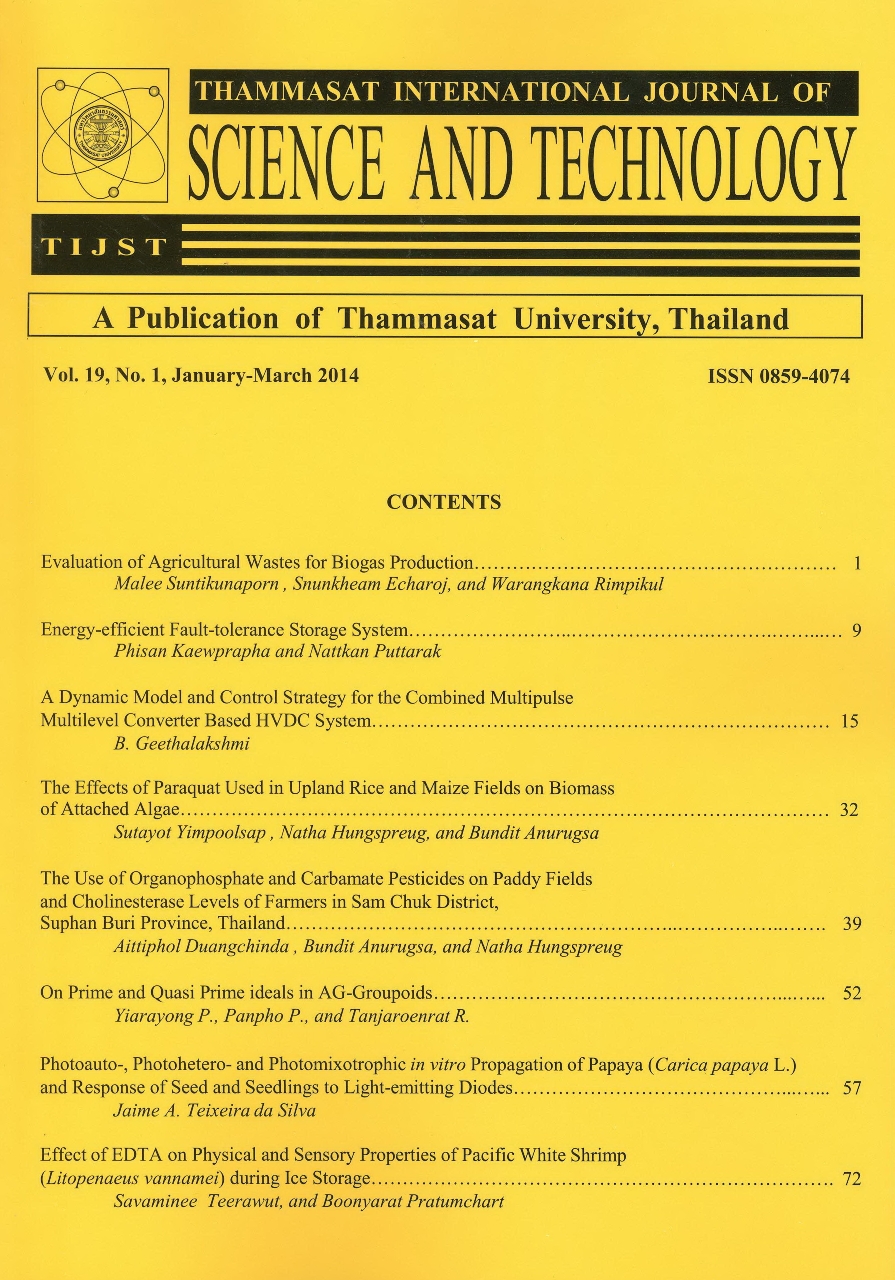Conversion of Jerusalem Artichoke Tuber Powder into Fructooligosaccharides, Fructose, and Glucose by a Combination of Microwave Heating and HCl as a Catalyst
Main Article Content
Abstract
The major carbohydrate component of Jerusalem artichoke tuber powder (JATP) is inulin, which is a chain of β-1,2-D-fructose with a glucose terminal. The extracted inulin in the form of oligosaccharides from JATP has been applied as a sugar substitute and in prebiotics. The conventional methods to extract inulin are carried out by enzymatic methods, which are limited by high operational cost, complicated processes, low substrate solubility, narrow range of temperature activity of enzymes, and longer reaction times. This study investigates the feasibility of using a selective chemical method to extract the oligosaccharide from JATP, which could provide a more cost effective and rapid method than the conventional enzymatic extractions. The advantages of microwave radiation (MCR) heating in combination with HCl as a catalyst were explored in this study to determine the suitable conditions to extract fructooligosaccharides, fructose, and glucose from polysaccharides in JATP. Suitable reaction conditions for each saccharide were determined. A low temperature of 130 °C, 0.05 M HCl, radiation time of 15 min, and the ratio of the reaction volume to JATP mass of 10:1 (mL/g), were selective for fructose production with the highest yield of 44.7 %. A small amount of 5-HMF (0.6 %) was found in the hydrolyzed products (HP), and the UV absorbance of the HP at 284 nm was in the average range of 1.1, under these conditions. Glucose and fructose production with the maximal yields of 10.1 % and 24.0 %, respectively, were obtained at 110 °C, 0.4 M HCl, radiation time of 15 min, and the ratio of reaction volume to JATP mass of 10:1 (mL/g). A medium amount of 5-HMF at 5.5 % was generated, and the maximal UV absorbance of the HP was at 2.8 under these reaction conditions. The reaction conditions for a selective fructooligosaccharide production at the highest yield of 12 % was 110 °C, 1.8 M HCl, radiation time of 15 min, and 10:1 (mL/g) ratio of the reaction volume to JATP mass. A low reaction temperature was suitable for selective saccharide production.
Article Details
How to Cite
Viet Bui, C., Siriwatwechakul, W., Tiyabhorn, W., Wattanasiritham, T., Limpraditthanont, N., & Boonyarattanakalin, S. (2016). Conversion of Jerusalem Artichoke Tuber Powder into Fructooligosaccharides, Fructose, and Glucose by a Combination of Microwave Heating and HCl as a Catalyst. Science & Technology Asia, 21(3), 31–45. retrieved from https://ph02.tci-thaijo.org/index.php/SciTechAsia/article/view/67194
Section
Engineering


